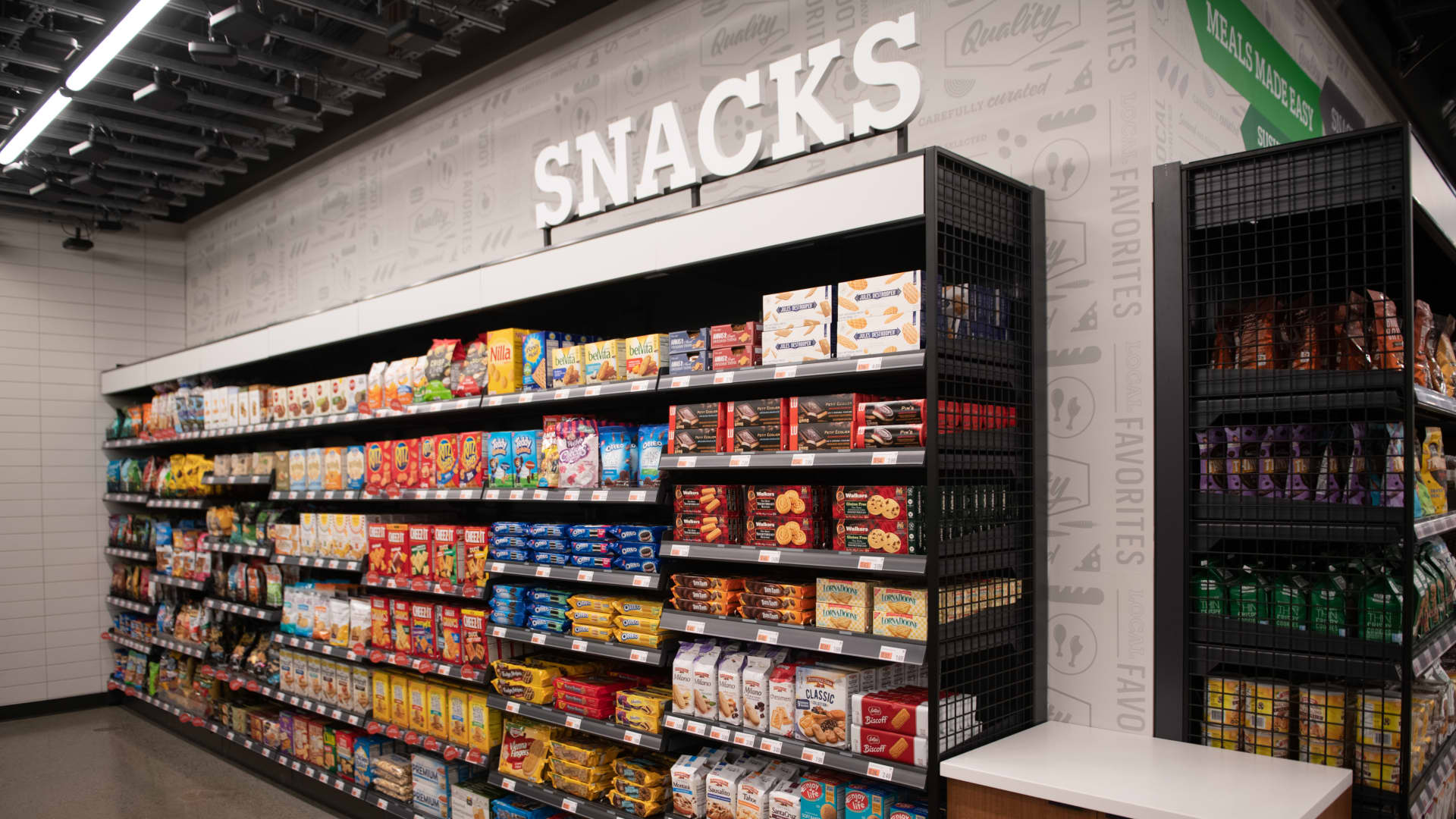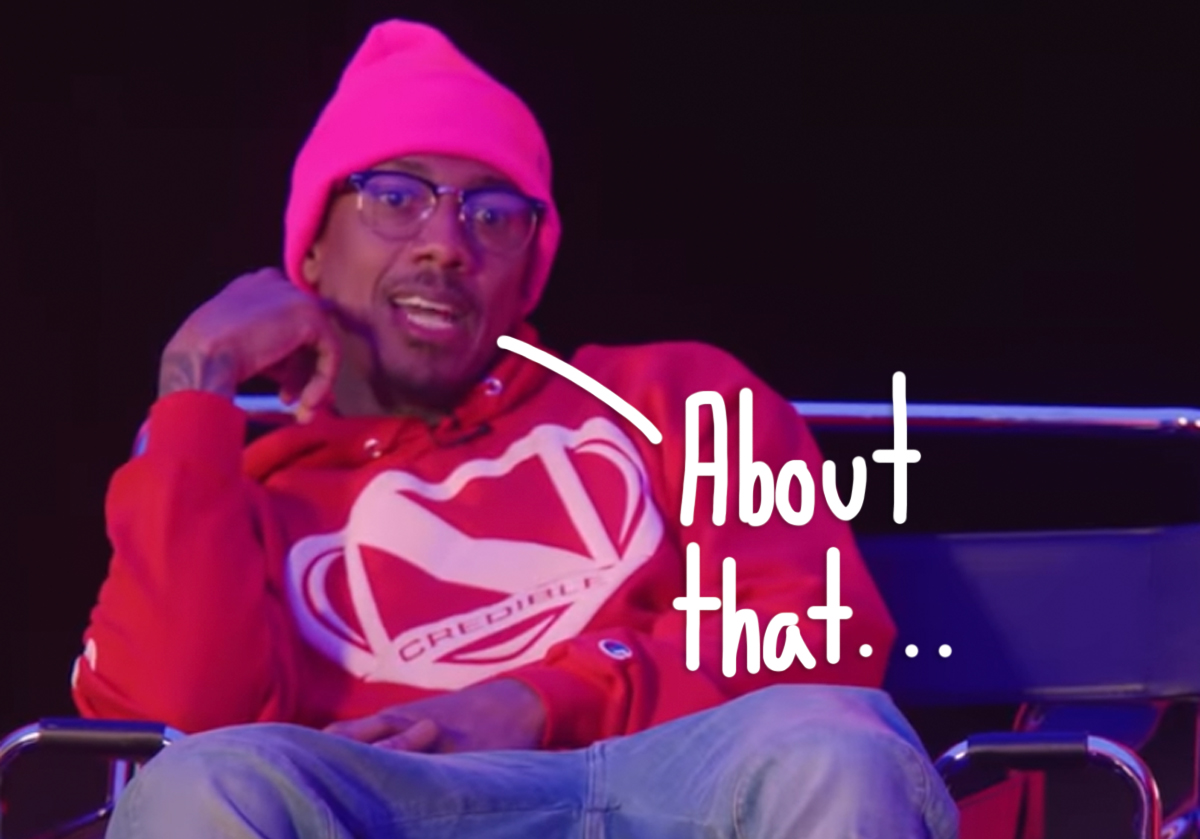The snack aisle is seen during a tour of a new Amazon Go store in the Capitol Hill neighborhood of Seattle, Washington, U.S., on Monday, Feb. 24, 2020.
Chona Kasinger | Bloomberg | Getty Images
For more than a century, frosted cornflakes have been the backbone of Kellogg’s business. That changes Monday, when the company will spin off its stable cereal business in favor of its faster-growing snack unit and rename itself Kellanova.
The spinoff comes weeks after another wager that consumers will graze between meals, when J.M. Smucker bought Twinkie maker Hostess Brands for $5.6 billion in a bid to expand its snack lineup.
But food companies’ major bets on snacking come as investors fear the looming danger of Big Pharma’s blockbuster obesity and diabetes drugs Wegovy and Ozempic. Many investors have high hopes for the pharmaceuticals’ future, but their success could mean slower sales for the companies that produce Oreos, Doritos and Hershey’s Kisses.
Big Food’s bet on snacking began roughly a decade ago, and it’s only accelerated as the rest of the grocery aisles see sales stagnate, particularly as prices rise. The U.S. market for savory snacks is expected to grow 6% annually from 2022 through 2027, and sweet snacks’ sales are expected to rise 4.6% annually during that time, according to HSBC. Roughly three-quarters of consumers plan to snack every day, according to Accenture data.
Millennials and Generation Z consumers are fueling the trend. Younger generations snack more often than older consumers, said Kelsey Olsen, food and drink analyst for market research firm Mintel. Millennials and Gen-Z consumers tend to eat smaller meals that are closer together, creating more occasions to grab a snack.
At the same time, Novo Nordisk’s Ozempic and Wegovy have taken off, fueled by prescriptions to help patients lose weight. The drugs, known as GLP-1 agonists, suppress appetites by mimicking a gut hormone. Some patients even report developing aversions to foods with higher sugar and fat content — a category that includes many big snack brands.
More than 9 million prescriptions for these kinds of drugs were written in the U.S. in the fourth quarter of 2022, according to a Trilliant Health report.
Morgan Stanley estimates that the number of patients taking GLP-1 drugs could reach 24 million, or nearly 7% of the U.S. population, by 2035.
If so, consumption of baked goods and salty snacks could fall 3% — or even more if the new eating habits of the people using the treatments extend to their broader households and friends, according to Morgan Stanley’s research. That puts companies like Hershey, Mondelez, PepsiCo, General Mills and Kellogg’s successor Kellanova at risk.
But not everyone in the industry agrees with that assessment.
Weight loss drug uptake could be slow
Boxes of Ozempic, a semaglutide injection drug used for treating type 2 diabetes and made by Novo Nordisk, is seen at a Rock Canyon Pharmacy in Provo, Utah, May 29, 2023.
George Frey | Reuters
After buying Hostess Brands, Smucker CEO Mark Smucker defended the future of Twinkies and Ding Dongs against the threat of GLP-1 drugs.
“There are multiple ways that consumers will continue to snack. … And given that consumers are going to continue to seek all different types of snacks, and sweet snacks are going to continue to be on the radar, we view that our projections here are sound,” he told analysts on a conference call.
For one, GLP-1 drugs like Wegovy and Ozempic are expensive, with a list price of roughly $1,000 a month. That high price has led some insurers to decide not to cover the treatments.
While some of the nation’s largest insurers, like CVS’s Aetna, cover prescriptions of these drugs, the federal Medicare program, many state Medicaid programs and some commercial insurers don’t, leaving patients to pick up the bills themselves.
Another factor could work in the favor of snack sales. Many of the consumers who eat the most junk food likely won’t be able to afford Wegovy or Ozempic.
“Consumption of indulgent salty snacks that would be considered ‘junk food’ generally over-indexes toward lower-income individuals, who are unlikely to be these drugs’ primary users, ” RBC analyst Nik Modi said in a research note Tuesday.
Modi wrote that he doesn’t believe the drugs will ultimately be problematic for the manufacturers of salty snacks.
What’s more, patients have to inject themselves once a week, and if they stop taking the treatments, their effects disappear, usually erasing any weight loss that had occurred over time.
“This sort of drug is super interesting in what it can do, but I think until it comes in a radically different formulation, in a pill or something like that, and something that has enduring impact and obviously the much lower price point, I think it’s going to be tricky,” said Oliver Wright, senior managing director of Accenture’s consumer goods and services unit.
Even if the drugs become more affordable and are more widely adopted, the change won’t happen overnight. Food companies will have time to adjust to shifting consumer behavior.
“We acknowledge that the impact in the near term is likely to be limited given drug adoption will grow gradually over time, but we could see a longer-term impact as drug prevalence increases,” Morgan Stanley’s Paula Kaufman wrote in a note to clients. “Moreover, we expect companies to adapt to changes in consumer behavior through innovation and portfolio reshaping efforts.”
That may mean slower sales growth than expected and moves to divest some brands. But Big Food has been making strides toward healthier options anyway. GLP-1 drugs could just put more pressure on companies to update their portfolios.
PepsiCo and Mondelez are among the companies that have snapped up smaller brands that make healthier snacks. Still, growing them into global powerhouses will take time.
Food companies are also looking internally, investing in their research and development teams to create new formulations that mirror the taste of their full-sugar and salt versions.
“My prediction is, before the end of the decade, we will have a healthy Oreo that can be put on a plate with an old one, and consumers won’t be able to tell them apart — and that will be a good thing,” Accenture’s Wright said.
— Annika Kim Constantino contributed reporting for this story.


























































![Mason Ramsey – Twang [Official Music Video] Mason Ramsey – Twang [Official Music Video]](https://i.ytimg.com/vi/xwe8F_AhLY0/maxresdefault.jpg)






:quality(85):upscale()/2023/09/27/787/n/1922564/d6c7ccb065146c21318450.43348291_.jpg)














